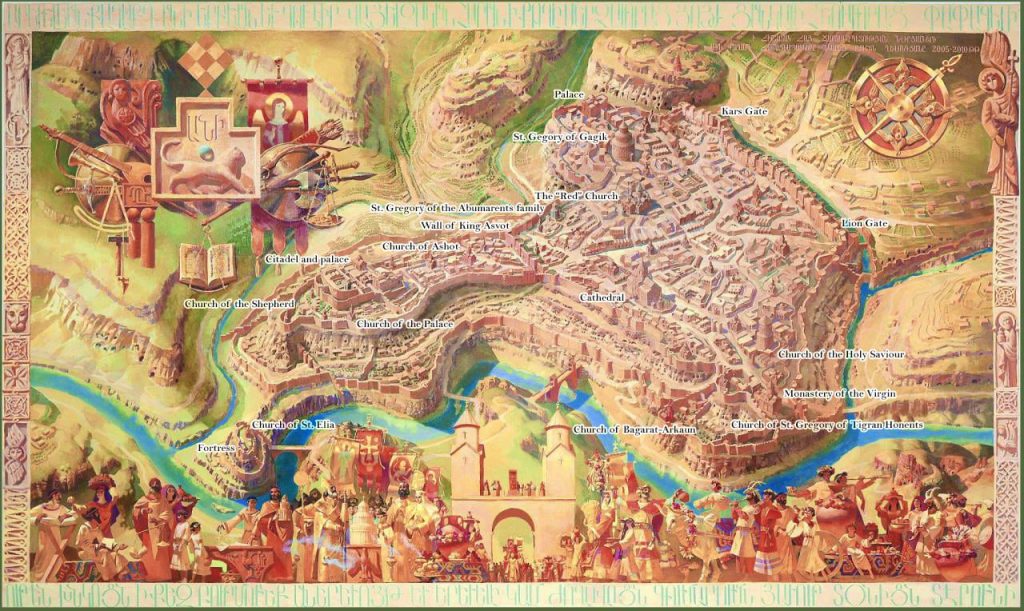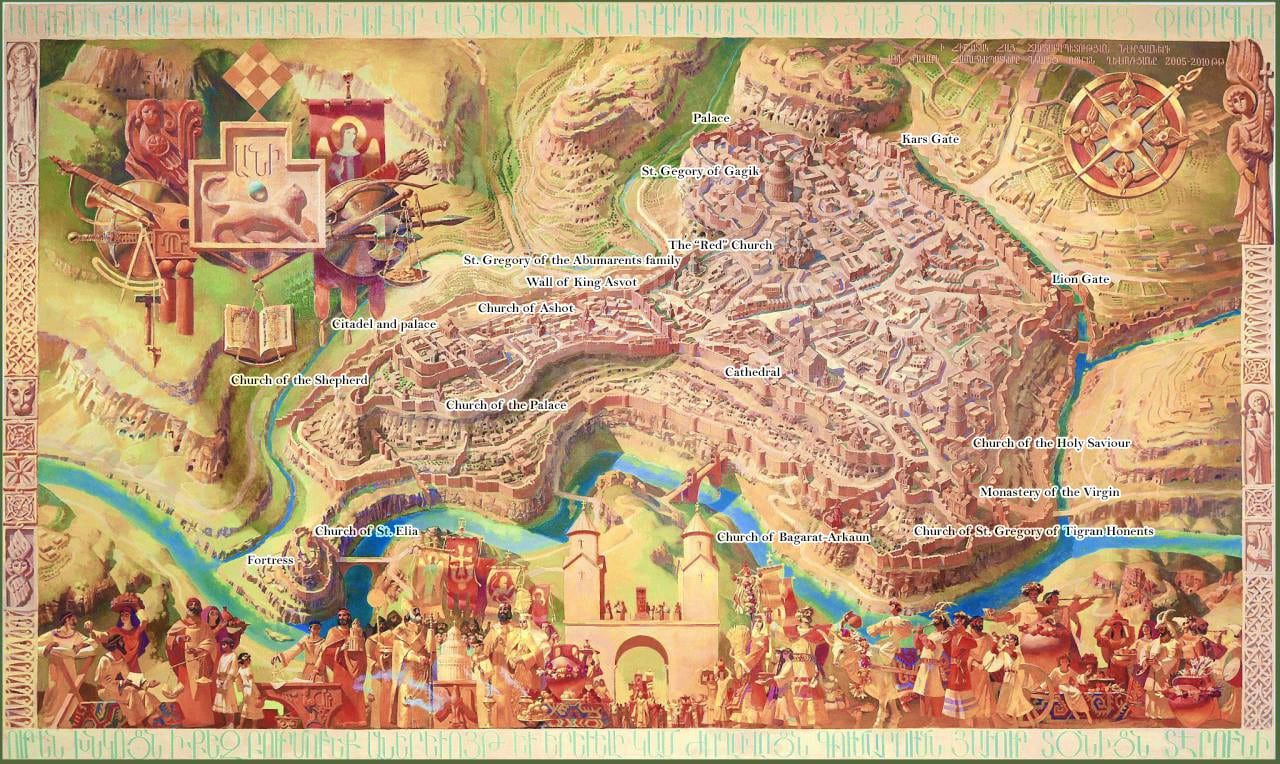
Have you ever wondered how did we lose all the lands? how was it all taken from us and how did we leave the lands?? Are you interested in knowing how the City of 1001 churches was gone? lets dive together into history to find some answers to share with you today:
In 1064, a large Seljuk army under Alp Arslan attacked Ani; after a siege of 25 days, they captured the city and slaughtered its population. An account of the sack and massacres in Ani is given by the Arab historian Sibt ibn al-Jawzi, who quotes an eyewitness saying:
Putting the Persian sword to work, they spared no one… One could see there the grief and calamity of every age of humankind. For children were ravished by the embraces of their mothers. they were mercilessly hurled against rocks, while the mothers drenched them with tears and blood…
The city became filled from one end to the other with bodies of the slain and [the bodies of the slain] became a road. […] The army entered the city, massacred its inhabitants, pillaged and burned it, leaving it in ruins and taking prisoner all those who remained alive…
The dead bodies were so many that they blocked the streets; one could not go anywhere without stepping over them. And the number of prisoners was not less than 50,000 souls. I was determined to enter the city and see the destruction with my own eyes. I tried to find a street in which I would not have to walk over the corpses, but that was impossible.
In 1072, the Seljuks sold Ani to the Shaddadids, a Muslim Kurdish dynasty. The Shaddadids generally pursued a conciliatory policy towards the city’s overwhelmingly Armenian and Christian population and actually married several members of the Bagratid nobility.
Whenever the Shaddadid governance became too intolerant, however, the population would appeal to the Christian Kingdom of Georgia for help. The Georgians captured Ani five times between 1124 and 1209: in 1124, 1161, 1174, 1199, and 1209. The first three times, it was recaptured by the Shaddadids.
In the year 1199, Georgia’s Queen Tamar captured Ani and in 1201 gave the governorship of the city to the generals Zakare and Ivane. Zakare was succeeded by his son Shanshe (Shahnshah). Zakare’s new dynasty — the Zakarids — considered themselves to be the successors of the Bagratids.
Prosperity quickly returned to Ani; its defenses were strengthened and many new churches were constructed. The Mongols unsuccessfully besieged Ani in 1226, but in 1236 they captured and sacked the city, massacring large numbers of its population. Under the Mongols, the Zakarids continued to rule Ani, as the vassals of the Georgian monarch.
By the 14th century, the city was ruled by a succession of local Turkish dynasties, including the Jalayrids and the Kara Koyunlu (Black Sheep clan) who made Ani their capital. It was ruined by an earthquake in 1319. Tamerlane captured Ani in the 1380s.
On his death, the Kara Koyunlu regained control but transferred their capital to Yerevan. In 1441 the Armenian Catholicosate did the same. The Persian Safavids then ruled Ani until it became part of the Turkish Ottoman Empire in 1579.
A small town remained within its walls at least until the middle of the seventeenth century, but the site was entirely abandoned by 1735 when the last monks left the monastery in the Virgin’s Fortress or Kizkale.

